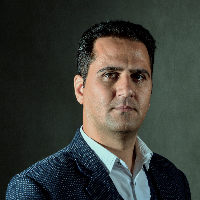Study and recognition of mineral matter of pastiglia layer and gliding of Safavid period in Qazvin chehelsotoun
The wall paintings of Qazvin Chehelsotoun Mansion include two periods in the early Safavid period and one period in the Qajar period. This topic has received little attention in the field of structural studies and stylistics. Investigating these decorations in order to understand the evolution of this art and considering the temporal precedence over other murals in the Safavid period seems necessary. (Especially in Isfahan) The main question of this research is to identify the structure and examine the differences and similarities between the techniques of layering and gilding in different layers related to the Safavid era in this monument. The research hypothesis is based on the similarity of materials and techniques used in the two short and successive time periods. The purpose of the study is to identify possible differences in the structure of the materials and techniques of layering and gilding in these two eras of the Chehelsotoun monument. For the reasons mentioned above, the western part of the south corridor and the motif patterns associated with these two periods were selected. Dental instruments were used for sampling to the depth of the plaster bed layer. After microscopic examination and coding of the samples, two specimens were selected to study the motif layers of both periods from the upper to the lower substrate. To identify the elements and ingredients of these motifs, the microscopic images were examined by SEM-EDX microscope. In order to identify and detect the composition of materials in different phases, different decorative and gilding layers (gold layer, red soil layer and plaster substrate) were examined by XRD imaging. The results of this research show that the techniques of layering and gilding are identical in these two periods. There is only a slight difference in the purity of the gold and plaster substrates used during these periods.
SEM-EDS , XRD , Pastiglia , Gilding , Qazvin Chehelsotoun
- حق عضویت دریافتی صرف حمایت از نشریات عضو و نگهداری، تکمیل و توسعه مگیران میشود.
- پرداخت حق اشتراک و دانلود مقالات اجازه بازنشر آن در سایر رسانههای چاپی و دیجیتال را به کاربر نمیدهد.



